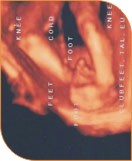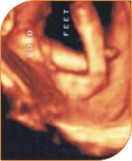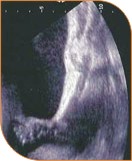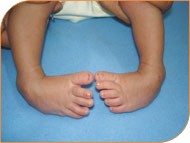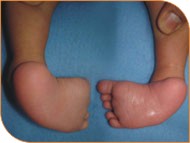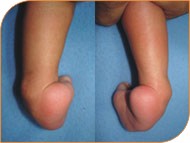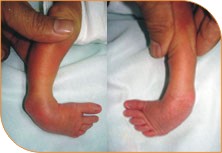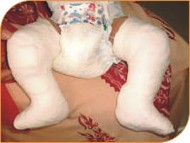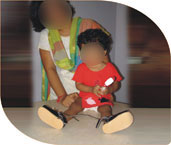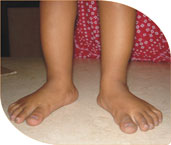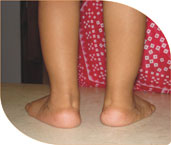
|
It is a foot deformity in which foot is turned inside and heel is drawn up and is difficult to feel. Shape of the foot resembles golf stick and hence termed as club foot. The diagnosis is obvious at birth by the look of the foot. Some will even know before the child is born, with help of an ultrasound scanning.
Exact incidence of clubfoot is not known in India but boys outnumber girls. One or both feet may be affected right foot being more common. This is commonest foot deformity. Symptoms
The appearance is unmistakable: the foot is turned to the side and it may even appear that the top of the foot is where the bottom should be. The involved foot, calf and leg are smaller and shorter than the normal side. It is not a painful condition. But if it is not treated, clubfoot will lead to significant discomfort and disability by the teenage years.
Treatment options Stretching and casting – Ponseti techniqueTreatment should begin as soon as possible after birth for a successful outcome without the need for surgery. Over the past few years more and more success has been achieved in correcting clubfeet without the need for surgery. A particular method of stretching and casting, known as the Ponseti method, has been responsible for this. At COC approximate one hundred feet with TEV are treated every year with this technique.
To get best result the treatment should start within first one to two weeks of life. In trained hands (paediatric orthopaedic surgeon) the success rate of this method is more that 95%.
With this method, the doctor changes the cast every week for several weeks, always stretching the foot toward the correct position. The heel cord is then released by small stitchless surgery, followed by last cast for three weeks.
Once the foot has been corrected, the infant must wear a brace initially for full day and then at night for more than four years to maintain the correction. This has been extremely effective but requires the parents to actively participate in the daily care by applying the braces. Without the parents' participation, the clubfoot will almost certainly recur. That's because the muscles around the foot can pull it back into the abnormal position.
The goal of this, and any treatment program, is to make your newborn's clubfoot (or feet) functional, painless and stable by the time he or she is ready to walk. (Note: Anytime your baby wears a cast, watch for changes in skin colour or temperature that may indicate problems with circulation.) |
|||||||||||||||||||||
|
||||||||||||||||||||||
Copy Right (R) 2008 Children’s Orthopaedic Centre
|
||||||||||||||||||||||
